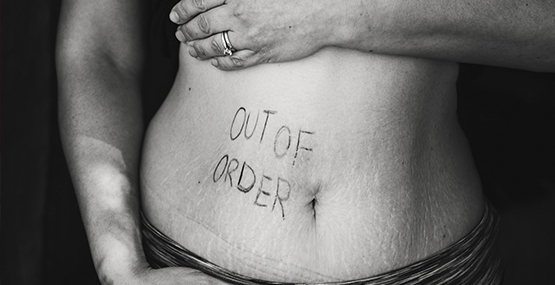
The Latest and greatest treatments for IBD: What to believe
What’s the best IBD medicine for me? Confusion on television and in your inbox....
See moresign up for our newsletter
SubscribeThe symptoms of IBD (inflammatory bowel disease) are often abdominal pain, diarrhea and rectal bleeding, but where the pain is located and how much diarrhea and bleeding can be different for Crohn's disease and ulcerative colitis. Those symptoms can also be different depending on where the disease is located.
Ulcerative Colitis—the Symptoms
Ulcerative colitis tends to get everyone's attention quickly with a sudden burst of diarrhea or a lot of bright red blood in the toilet or on the tissue (if it's severe, anemia can be present too). Pain–often below the navel can come on just before, during and maybe for a little while after the diarrhea. Fever isn't as common and often raises concern about the possibility of an infection. They don't all have to be there, but they seem to start abruptly. That's because the end of the large intestine (the rectum) is particularly sensitive to infection or inflammation, and that area is always affected with ulcerative colitis–unleashing loose and bloody bowel movements quickly.
Crohn's Disease
With Crohn's disease, the symptoms usually start slowly. The first is often pain that gradually gets worse. Then diarrhea starts, sometimes with blood. That's because Crohn's disease often seems to start at where the small and large intestines meet. When it starts further along the large intestine, closer to the rectum, the symptoms can be similar to the rapid build-up seen in ulcerative colitis.
Crohn's disease and Appendicitis Can Be Confused For Each Other
The pain generally is in the same area as the disease. Since the end of the small intestine (called the terminal ileum) meets the beginning of the large intestine, the pain often starts in the right lower part of the abdomen. That's where the appendix is too, so Crohn's disease when it starts and appendicitis can be confused for each other. Sometimes, it's possible to feel a lump or fullness beneath the skin, especially when the disease has been progressing for a while.
Crohn's Disease Around the Anus
Some of those with Crohn's have symptoms at or around their anal area. The most common is a beefy thickening at the anal opening. This can be mistaken for a hemorrhoid, though this anal or sentinel tag is actually inflammation that tells about the activity of the disease inside. Others may have a sore nearby (an abscess) or even a tract from the intestine (a fistula) that can drain small amounts of blood or pus. Together these features are known as perianal disease.
Because Crohn's disease can take a while to show itself, many will not eat as well, developing weight loss and an anemia, with poor absorption also contributing to both. If the symptoms have been there for a while, children may also experience poor growth and later puberty than other children their age.

Comparison of Symptoms
| Crohn's Disease | Ulcerative Colitis | |
| Abdominal Pain | +++ | +++ |
| Diarrhea, often with urgency | ++ | +++ |
| Rectal Bleeding | + | +++ |
| Perianal Disease | ++ | – |
| Weight loss | +++ | + |
| Anemia | ++ | ++ |
| Growth Failure in Children | ++ | + |
| Joint pain | + | + |
In both of the main forms of IBD, the symptoms can be different for each person. Not every patient with ulcerative colitis has 10 loose, bloody bowel movements daily and some have no pain at all. Not all patients with Crohn's disease will have diarrhea or blood or even pain for that matter. It depends on the location and severity of the disease and how long the problem has been present. Of note, these same symptoms can occur again if the disease flares, even while being treated.
Patients with either ulcerative colitis or Crohn's disease may also develop symptoms beyond the intestine (extra-intestinal manifestations). The most common are joint problems with just pain or actual swelling. Occasionally, that will develop even before the intestinal symptoms. Other problems with skin sores, liver disease and eye findings can also occur. These too can appear first.
The Symptoms of Other Inflammatory Bowel Diseases
Other Inflammatory Bowel Diseases also exist. The various other types of colitis tend to produce milder versions and milder symptoms that are similar to that of ulcerative colitis. They can have pain, diarrhea and bleeding, but less intense pain, less frequent bowel movements and less bleeding, but the only way to tell the difference between these conditions and mild forms of ulcerative colitis is with a colonoscopy and sampling of the intestinal surface and the intestinal contents. Behcet's disease, which occurs mainly in Asia and the Middle East, has symptoms similar to Crohn's, but almost always also has eye disease and sores near the genitals.
This article, as well as all others, was reviewed and edited by a member of our Medical Advisory Board.
Subscribe Be the first to know